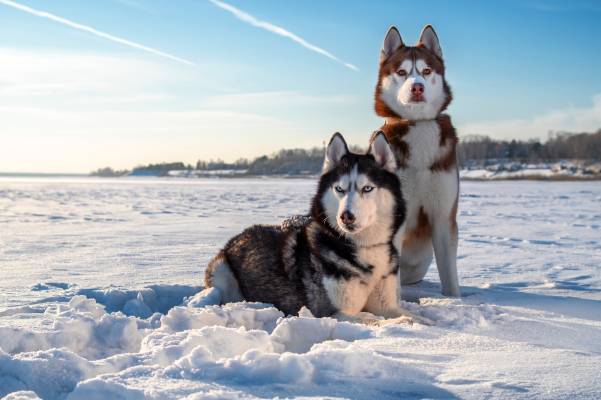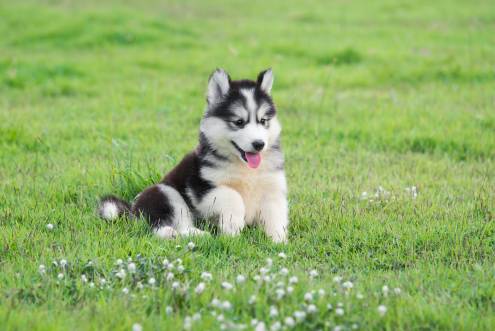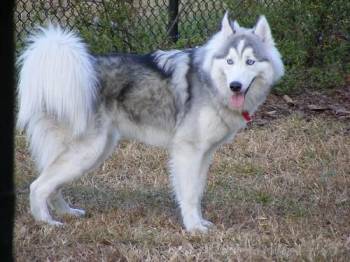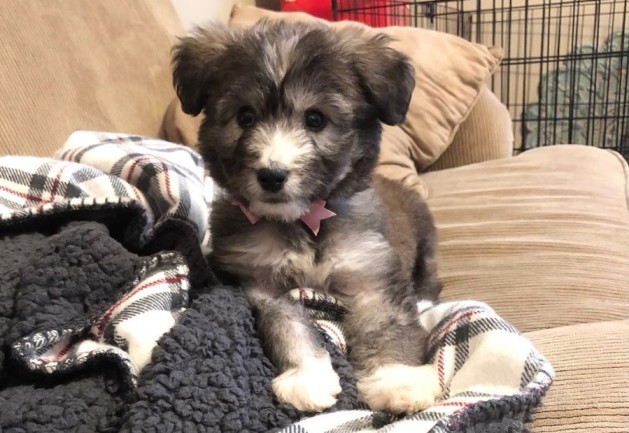Connect with a verified veterinarian in minutes. Licensed vets are available 24/7 to answer your questions. No need to worry about your furry family member.
Many people have fallen in love with the Siberian Husky through stories, movies, and more. If you’ve seen a Husky, you can see why people love them so much! Huskies are beautiful dogs that have wonderful personalities. They’re also quite affectionate with everyone, including pets and kids! Huskies are great for the right family!
Have you ever wondered about the various colors of Siberian Huskies? If so, you’ve come to the right place. We’ve put together information about the range of colors that Huskies come in. Let’s get started!
What’s the Difference Between the Siberian Husky and the Alaskan Husky?
Before we get started with the colors of Huskies, we wanted to clarify the difference between Siberian and Alaskan Huskies. These are both two types of Huskies that are commonly known by pet parents.
The main difference between the Siberian and the Alaskan Husky is that the Siberian Husky is a purebred dog breed. These dogs have a history that goes back for ages. These dogs have certain breed standards and have specific traits.
On the other hand, the Alaskan Husky is a mixed breed (hybrid) dog that doesn’t have a breed standard. These dogs come in various sizes and colors.
So, in this article, we’re going to focus on the Siberian Husky.
History of Siberian Husky Colors
Siberian Huskies are directly descended from ancient Siberian wolves, which lived more than 30,000 years ago.
Siberian Huskies come in a wide range of colors. You might think this is weird if the dogs are directly descended from wolves. However, the colors and coat patterns found in Huskies were once seen in the ancient Siberian wolves. What’s more, the same colors/patterns are also found in today’s wolves.

Review symptoms, medications & behavior to keep your pets healthy with a Vet Online in just minutes.
Ask a Vet Live NowColors & Genetics
Genetics is a complicated topic when it comes to the color of a dog’s fur. You really need to study genetics for many years before gaining insight into how genes work. When it comes to Husky coat colors, breeders may identify a certain gene that causes a color or pattern in their dog’s fur. If so, the breeders may more successfully breed for that specific color or pattern.
What’s more, some genes that control fur color may also be involved in other body processes. In some cases, certain Husky could even increase the risk of certain health issues in a dog.
Merle & Brindle Patterns May Cause Health Issues
Researchers have found that the genes responsible for Siberian Huskies’ merle and brindle patterns can cause medical problems. For example, the Siberian Husky Club of America (SHCA) has said that these markings may indicate a Husky is not purebred.
In addition, the SHCA has also said the merle pattern can cause certain genetic health issues, including:
- Eye disorders
- Deafness
- Immune system dysfunction
There’s also a coat pattern called a “double merle,” which comes from a pair of Siberian Huskies that both carry the merle gene. That is why the pattern is called a double merle.
The health issues associated with the double merle pattern can include:
- Missing eyes
- Poorly developed eyes
- Deafness
- Puppies born blind and deaf
Coat Colors of the Siberian Husky
In the following sections, we’ll focus on the colors recognized by the AKC for Siberian Huskies.
1. Agouti & White Husky
A Siberian Husky with the agouti pattern is the closest to the wild wolf relatives of these dogs. In this color combination, the undercoat is dark, while the outer coat has lighter fur of various colors.
In addition, the overcoat hairs are darker towards the base and lighter towards the tip. The agouti Siberian Husky is a beautiful dog that looks much like his ancient wolf ancestors.
2. Black & White Husky
The most common pattern found in Huskies is the black and white pattern. The black may vary in intensity and spread. The black can also appear as silver if the black lightens, depending on the dog’s genetics.
3. Grey & White Husky
The grey in a Husky’s fur can also appear in different intensities. The shades of gray can vary from dark gray or even have a yellowish tint. The gray may also look silvery.
In a silver-grey dog, the guard hairs are banded with various shades of white. The undercoat is white, with the combination of making the dog look silver. There may also be a slight darkening along the dog’s spine. Sometimes the dog’s silvery coat is called the “chinchilla factor.”
In a grey dog, the guard hairs are banded with cream or buff tones with black tops. The undercoats looks almost beige or slightly yellow, giving the dog a yellowish-gray shading.
4. Red & White Husky
The red in the dog’s fur can run from deep red to a light coppery color. These dogs usually have no black in a red & white Husky.
In the copper dog, they have no black hairs and the guard hairs are banded with a dark red/brown color.
In a light red Husky, there are no black hairs. These dogs look almost pale yellow to light orange.
Red & White Huskies usually have liver-colored points (ears, eye rims, noses, and lips).
5. Sable & White Husky
In the sable & white Husky, the undercoat is red or copper, while the guard hairs are red near the skin and black near the tip.
These dogs always have black points (nose & ears) and black tips on the fur. The dog’s overall coat has a reddish cast.
6. White Husky
The white Siberian Husky is completely white, though in some dogs the coat may have a yellowish tint. In addition, some dogs also have a few black guard hairs. This is the rarest color in Siberian Huskies.
In a white Husky, the undercoat is a solid white or silver, and the points may be black or liver-colored.
Summing It Up
So, there you have it! These are the recognized colors of Siberian Huskies. No matter what color these dogs are, they’re beautiful dogs that make wonderful companions for the right family!
Connect with a verified veterinarian in minutes. Licensed vets are available 24/7 to answer your questions. No need to worry about your furry family member.

Julie
Julie is a graduate of the University of North Carolina, Wilmington, where she studied Animal science. Though contrary to the opinion of her parents she was meant to study pharmacy, but she was in love with animals especially cats. Julie currently works in an animal research institute (NGO) in California and loves spending quality time with her little cat. She has the passion for making research about animals, how they survive, their way of life among others and publishes it. Julie is also happily married with two kids.
Review symptoms, medications & behavior to keep your pets healthy with a Vet Online in just minutes.
Ask a Vet Live Now




